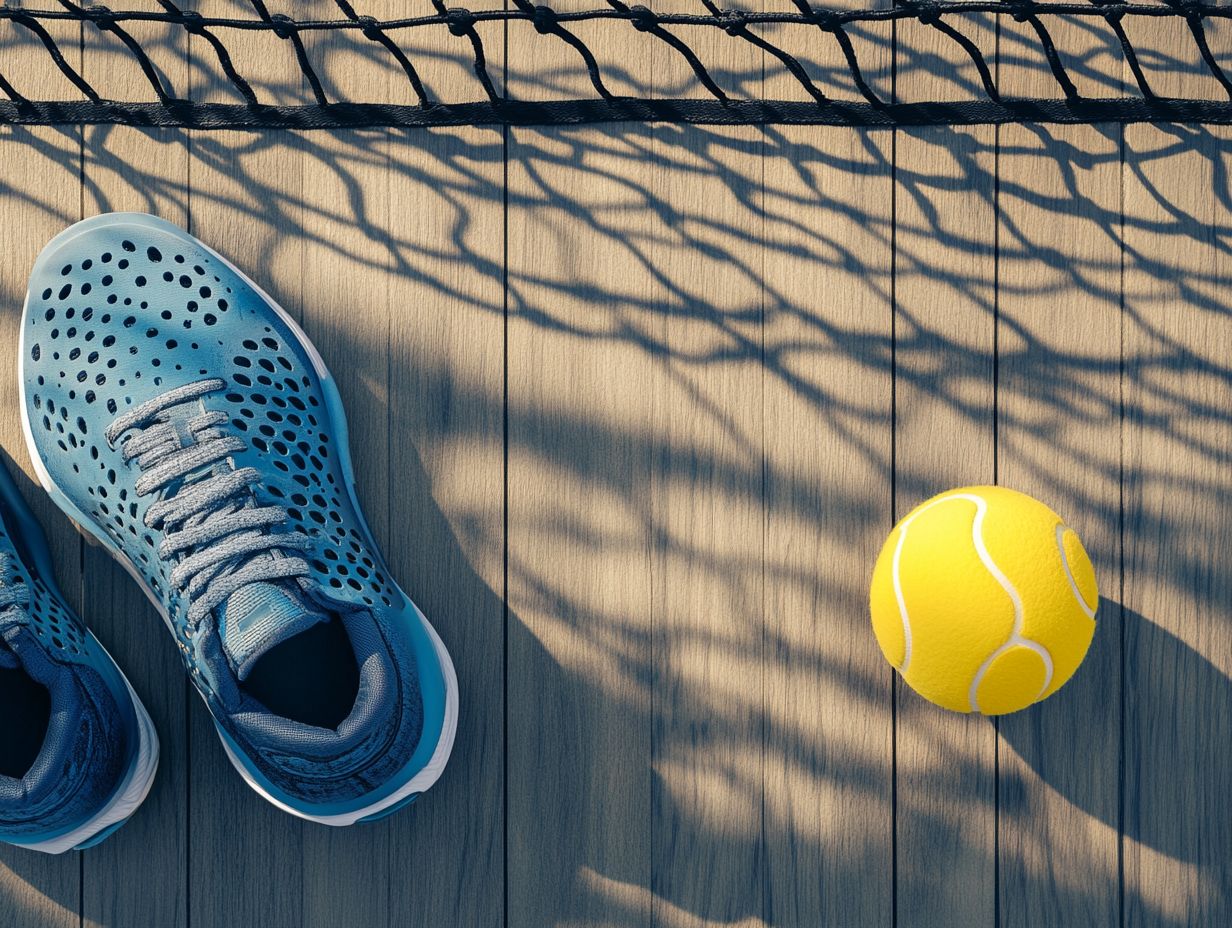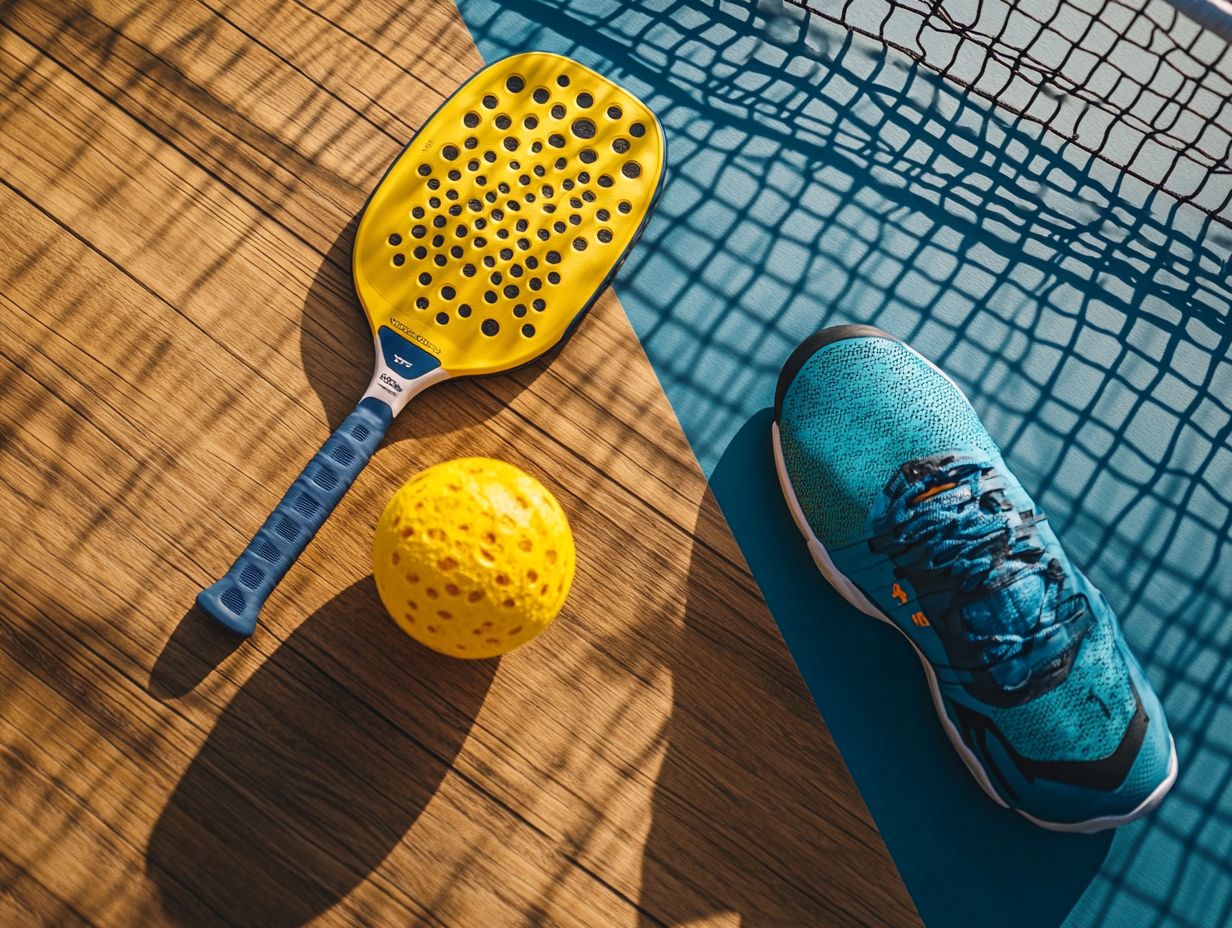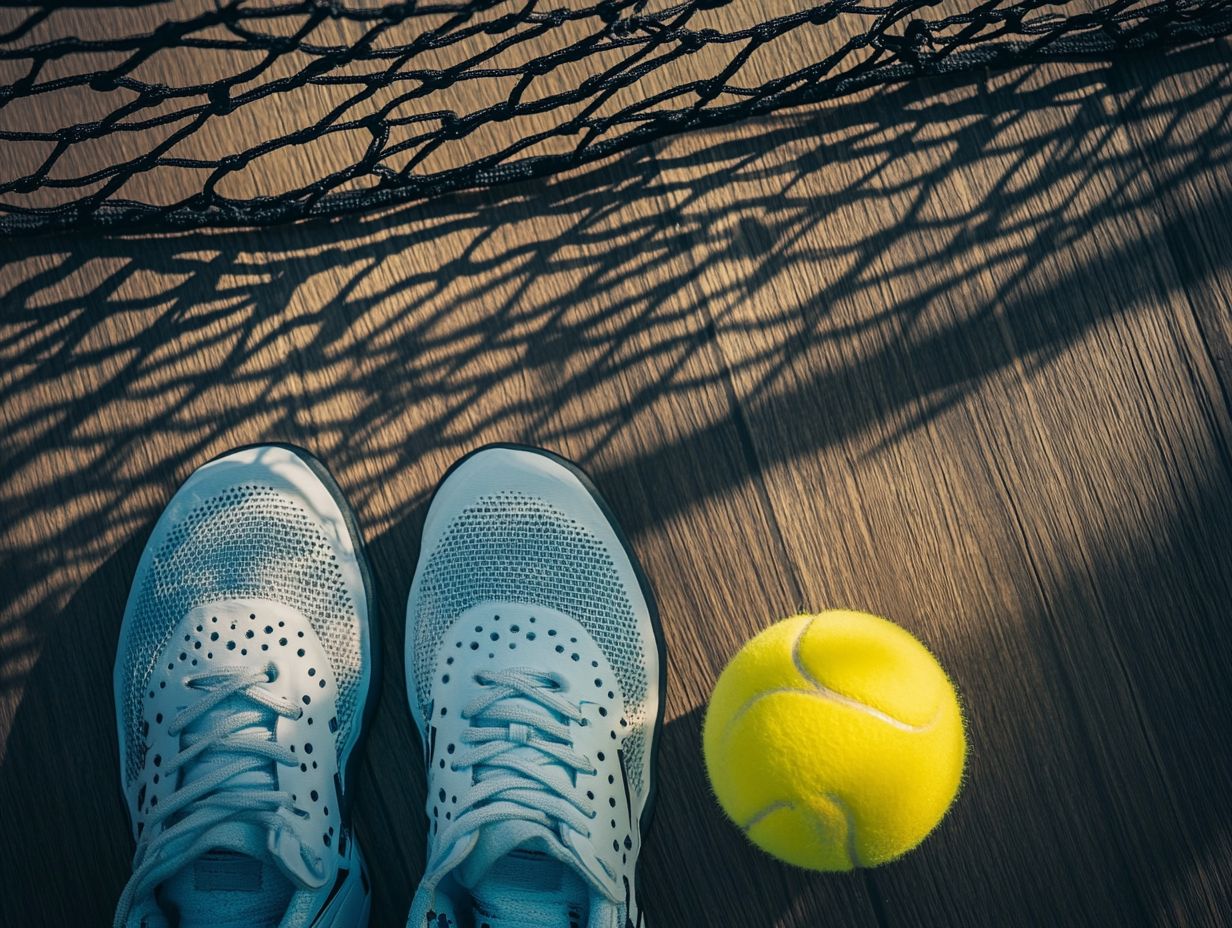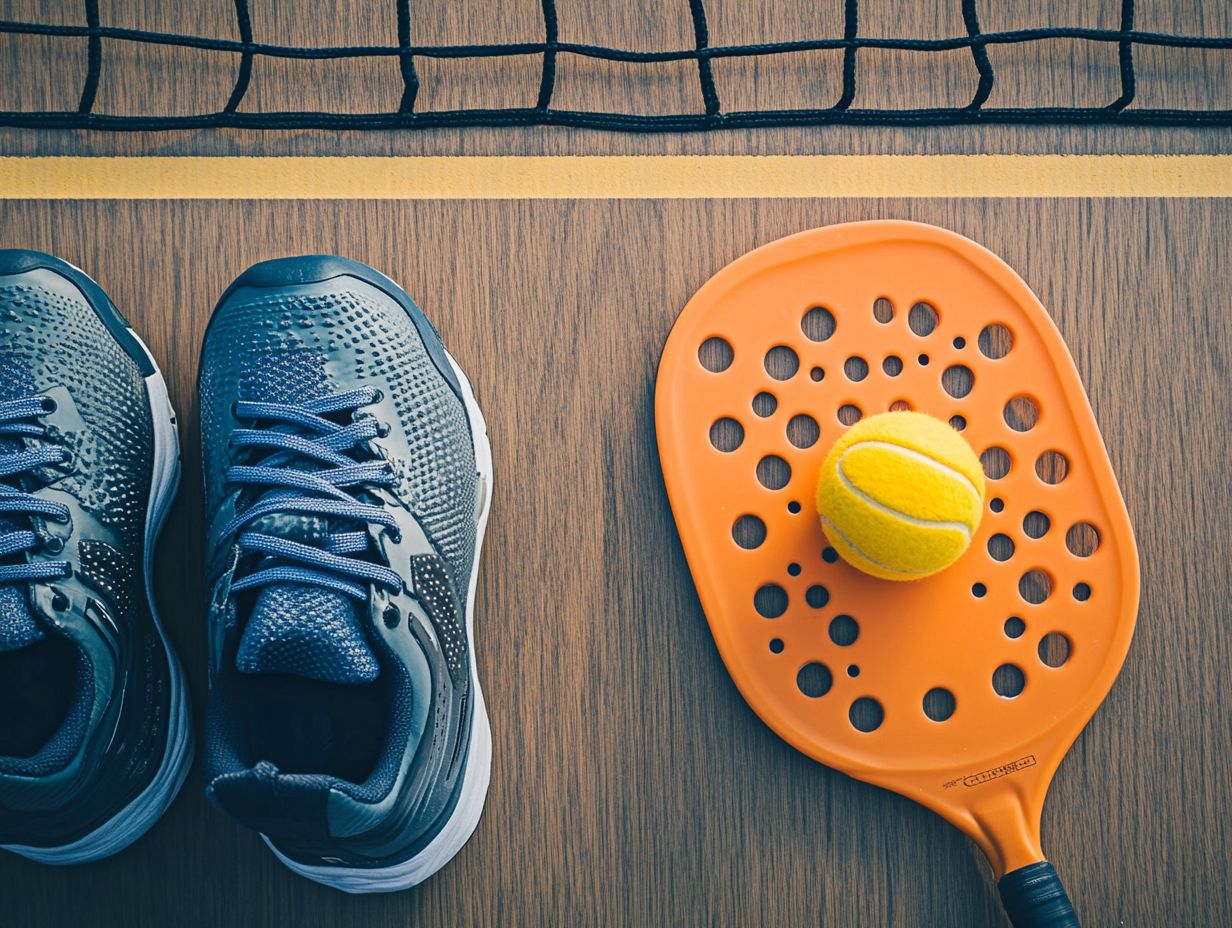Pickleball is a sport that combines elements of badminton, tennis, and table tennis, played on a court with a unique set of rules and equipment. Suitable for all ages and skill levels, pickleball has become a popular game for recreational players, beginners, and competitive enthusiasts alike.

The game promotes fitness, agility, and coordination, offering an engaging way to exercise while providing a fun activity for families and friends looking to spend quality time together.
Originating in the mid-1960s on Bainbridge Island, Washington, pickleball has grown into a beloved pastime in communities across North America and beyond. Players use paddles to hit a plastic ball over a net, following simple rules that facilitate quick learning and create an inclusive environment.
Community events, local leagues, and organized tournaments encourage social interactions, helping to foster friendships among participants.
The health benefits of pickleball are numerous, as playing can enhance cardiovascular health, improve balance, and increase overall muscle strength, making it an excellent choice for those seeking to stay active while enjoying a vibrant social scene.
Essential Pickleball Equipment
Essential pickleball equipment is crucial for both beginners and experienced players, as it directly affects their performance and enjoyment of the game.
Key items include paddles, balls, nets, and appropriate footwear, all of which are designed to enhance the playing experience and ensure safety.
By understanding the various options available on the market—from lightweight paddles to durable balls—players can select the best gear suited to their skill level, whether they are participating in recreational games or competitive tournaments.
Pickleball Paddle
The pickleball paddle is the most crucial piece of equipment for any player, as it significantly impacts performance during play. Made from various materials, including composite and wood, pickleball paddles are available in different weights and grip sizes to suit individual player preferences.
Choosing the right paddle involves understanding key factors such as balance, thickness, and texture, as these elements can influence control, power, and overall enjoyment of the game. For instance, composite paddles are more durable and offer better power, while wooden paddles are often favored by beginners for their solid feel.
When selecting a paddle, players should consider their playing style, whether they prefer aggressive power strokes or a more controlled, finesse approach. Brands like Selkirk and Paddletek offer models tailored to these varying needs.
Additionally, determining the appropriate grip size is essential, as it directly affects comfort during lengthy matches. By understanding these differences, players can maximize their potential on the court.
Pickleball Balls

Pickleball balls are specifically designed for the sport, featuring a lightweight structure suitable for both indoor and outdoor play. Typically crafted from high-quality plastic, these balls are available in a wide variety of colors and designs. Key attributes such as bounce and noise levels significantly impact the sport’s performance, making it essential for players to understand the differences between indoor and outdoor balls to maximize their game.
In indoor pickleball, players generally prefer indoor balls, which are softer and generate less noise when hitting gym floors. For example, the Franklin X-40 Indoor Pickleball features a smoother surface with fewer holes, allowing for a softer touch and quieter performance.
In contrast, outdoor pickleball balls are designed to be more rugged, with larger holes that ensure consistent flight despite wind and harsher elements. Balls like the Dura Outdoor Pickleball are built to withstand outdoor conditions; however, they tend to create a louder and more aggressive playing experience.
Brands such as Dura and Onix are well-known for producing some of the most commonly used outdoor and indoor pickleballs, respectively. For instance, the Dura Fast 40 outdoor pickleball is designed for extended outdoor play without damage, while the Onix Fuse G2 outdoor pickleball features a unique hole pattern that promotes a soft touch and consistent flight.
Other brands, such as Franklin Sports and Paddletek, often specialize in either indoor or outdoor balls. While most pickleball balls are made from durable plastic, companies continuously innovate their designs to enhance gameplay. Factors such as ball weight, material, and hole design are crucial in determining how the ball performs during games and tournaments. The choice of ball not only affects gameplay strategy but also enhances the overall enjoyment and satisfaction of each match.
Pickleball Court
A standard pickleball court is smaller than a traditional tennis court, typically measuring 20 feet wide and 44 feet long, which is specifically designed to accommodate the unique gameplay of pickleball. Court lines are crucial, as they delineate areas such as the kitchen, service boxes, and baselines, significantly impacting strategy and scoring. Understanding the court’s layout enhances player performance and ensures adherence to the official rules of the game.
Plus its basic dimensions, the court features specific markings that play pivotal roles during play. The kitchen, or non-volley zone, extends 7 feet from the net, prohibiting players from executing volleys in this area and thereby increasing the game’s tactical complexity. Local clubs often maintain their courts to ensure optimal playing conditions, making sure that the lines remain distinct and clear for all players.
Various court types, from indoor to outdoor setups, can influence gameplay, so regular maintenance is essential for preserving both the integrity and enjoyment of the sport.
Pickleball Net
The pickleball net is the most crucial piece of equipment in the game of pickleball. According to official requirements, it stands 36 inches high at the sidelines and 34 inches high in the center. Constructed from durable materials, the pickleball net is designed to withstand the wear and tear of extended play during both outdoor and indoor matches.
Proper installation and maintenance of the net are essential for ensuring fair play and compliance with the rules, as they enhance the overall experience for players.
Correct installation involves stretching the net tightly across the center line of the pickleball court, providing the necessary tension to prevent sagging during play. Players should regularly inspect the net for signs of wear and tear, replacing any frayed components as needed.
Local clubs hosting community pickleball events often emphasize the importance of net quality; a poorly maintained net can significantly affect the quality of the match and the satisfaction of the players.
Players should also adhere to the guidelines established by governing bodies to ensure that the net meets all competitive standards. This consideration is crucial for a positive experience, whether they are playing casually with friends or competing in local tournaments.
Optional Equipment for Advanced Players

Optional equipment for advanced pickleball players can enhance performance and provide a competitive edge in both recreational play and tournaments.
High-quality pickleball shoes offer the agility and support necessary to prevent injuries and improve footwork during matches. Additionally, gloves can enhance grip and control, while a dedicated pickleball bag ensures organized storage of all gear and facilitates easy transport to and from the court.
Pickleball Shoes
Pickleball shoes are specifically designed to meet the unique requirements of the sport, enabling players to perform at their best while minimizing the risk of injury. These shoes are lightweight and feature cushioning that supports lateral movements, which are essential to the game. Proper footwear can significantly reduce the incidence of common injuries associated with high-impact sports, such as ankle sprains and knee injuries. Choosing the right shoes is crucial for optimizing performance and decreasing injury susceptibility.
When selecting pickleball shoes, it is important to consider the traction patterns, as they influence grip on various surfaces and can impact movement and stability during play. Additionally, look for shoes with good cushioning, as players experience repeated impacts while playing. Effective cushioning helps absorb shock and makes quick starts and stops easier on the joints. Support is also vital; shoes with a reinforced toe and soles that provide ankle support can help players maintain balance and stability.
ASICS, New Balance, and Nike are among the companies known for their pickleball footwear, each offering a variety of options tailored to the specific needs of the game.
Pickleball Gloves
Pickleball gloves are an optional accessory that can significantly enhance grip and control during play, particularly in humid conditions or for players with sweaty hands. Designed to improve performance, these gloves offer additional cushioning and support, making them an excellent training aid for those who are still developing their skills and techniques.
Choosing the right gloves is essential for maximizing comfort and achieving optimal performance. Made from lightweight and breathable materials, such as synthetic leather and moisture-wicking fabrics, these gloves help keep hands dry while allowing for flexibility and dexterity.
Many players find that the improved grip provided by the gloves aids in executing powerful shots with greater accuracy. Popular brands like Selkirk, Onix, and Paddletek produce gloves featuring reinforced palms and ergonomic designs that cater to various playing styles.
By investing in quality pickleball gloves, players can enhance their gameplay experience while reducing the likelihood of blisters and discomfort during extended matches.
Pickleball Bag

Pickleball bags play a crucial role in transporting and organizing gear for games and tournaments. Available in various sizes and styles, these bags are designed to hold paddles, balls, water bottles, and other accessories, ensuring that all equipment is readily accessible when needed. Proper storage and portability enhance the overall pickleball experience, making it easier for players to prepare for both practice and competition.
When choosing a bag, players should consider features such as the number and design of compartments, which help with better organization of gear. Popular materials like durable nylon and weather-resistant fabrics provide both protection and longevity. Travel-friendly designs, complete with padded straps and lightweight options, make it easy to transport gear to and from the courts.
Pickleball bags come in a variety of sizes, shapes, and colors to cater to individual player preferences and needs. Leading brands like Selkirk and Onix offer a range of models with different features and price points to accommodate all players.
Tips for Choosing the Right Equipment
Selecting the right pickleball equipment is crucial, as it significantly impacts both performance and enjoyment on the courts.
When choosing paddles and balls, several factors should be taken into consideration. Players need to assess their playing style, skill level, and personal preferences before making a selection, as the right gear can enhance both comfort and gameplay.
Additionally, players should have a solid understanding of the various features of paddles and balls, such as grip size, weight, and materials. This knowledge enables players to make informed choices that can enhance their performance.
Considerations for Paddle and Ball Selection
Knowing how to select a pickleball paddle and ball is crucial, as these two pieces of equipment significantly impact a player’s performance on the court. Choosing the right pickleball paddle is essential for maximizing playing efficiency, as it affects the control of the ball’s trajectory and placement.
The key factors to consider when selecting a pickleball paddle include grip size, weight, and material. Players should choose a grip size that feels most comfortable; a paddle that is too small can lead to injury, while one that is too large can be difficult to control. The correct grip size enhances a player’s ability to manage both the paddle and the ball effectively.
Paddle weight ranges from 6 to 14 ounces, with the majority falling between 7 and 8 ounces. Heavier paddles provide better power and reduce the need for muscle force, whereas lighter paddles offer improved control. The material of the paddle also influences its sound, vibration, and ball control, so players should select a paddle that suits their preferences.
Paddle selection is also influenced by skill level and playing style. Beginners often benefit from lighter paddles with a larger sweet spot, making it easier to hit the ball correctly. In contrast, advanced players typically prefer heavier paddles that offer the muscle force necessary for enhanced ball control and accuracy.
Aggressive playing styles that employ more spin necessitate a paddle with a texture and surface material capable of generating that spin. For those focusing on controlling the ball’s trajectory and placement, a firmer surface is more advantageous.
Ball selection is equally important as paddle selection, as different balls exhibit varying bounce characteristics. The design of specific balls makes them more effective in different playing environments. Outdoor balls are constructed with rougher materials to withstand wind, while indoor balls tend to have a softer, rubber-like feel that facilitates easier control.
The playing environment plays a significant role in ball selection; outdoor players should choose balls specifically designed to handle windy conditions and maintain a stable trajectory, while indoor players should prioritize balls that are easier to maneuver. Experts recommend that players experiment with various paddles and balls to determine which combinations work best for their individual playing styles.
Where to Buy Pickleball Equipment
There are several options for purchasing pickleball equipment, including online stores and local sports hardware shops, each offering a variety of products and price points.
Online retailers typically provide a broad selection of equipment along with reviews and recommendations, while local and regional stores allow players to test the equipment for comfort and fit.
The choice of where to buy equipment can significantly influence the overall buying experience.
Online Retailers
Online retailers offer pickleball players a convenient way to purchase equipment. They provide a wide variety of products at different price points and often include customer reviews and ratings. This availability allows players to easily compare products, ensuring they make informed choices regarding the quality and performance they require.
Many online retailers also feature detailed product descriptions that help customers understand the specifications of paddles, balls, and other essential gear. Additionally, customers can benefit from special promotions and discounts frequently available with online purchases, helping them stay within their budgets.
Popular online retailers often hold sales events, offering opportunities to buy premium gear at more affordable prices. The ability to read firsthand customer experiences enables individuals to assess the durability and effectiveness of the equipment before making a purchase, resulting in a better overall shopping experience that enhances their gameplay.
Local Sporting Goods Stores
Pros: One significant advantage of shopping at local sporting goods stores for pickleball equipment is the opportunity for hands-on testing of gear, particularly paddles and shoes. These stores foster a sense of community, and the staff can provide valuable recommendations and advice.
Cons: However, a potential downside is the limited inventory selection. For players who are part of a pickleball club, there may be opportunities to negotiate discounts with the local store owners.
Local sporting goods stores serve as excellent resources for purchasing pickleball equipment, allowing customers to personally test items before making a purchase. This is particularly beneficial for assessing the fit and comfort of paddles, shoes, and other gear, thereby increasing the likelihood of making a satisfactory purchase.
In addition, local stores often cultivate a sense of community, and staff members usually offer helpful recommendations and advice. Shopping at a local store not only provides a personalized shopping experience but also supports the local economy and community. Many local stores host events and tournaments for pickleball players, creating an engaging environment for individuals at any skill level.
Customers can frequently find clinics, demonstrations, and social events led by local professionals, which encourages greater participation in the sport. Ultimately, buying from local stores helps nurture a vibrant pickleball community where players can forge friendships, enhance their skills, and fully enjoy the game.

Pickleball’s more than a game to me—it’s a passion. I write, sharing its highs and lows, the thrills and the lessons. Some tales might draw you to the court, while others give a hint of the game’s magic. So, curious about my journey? Ready to dive deep into the world of pickleball with me? Let’s go.
